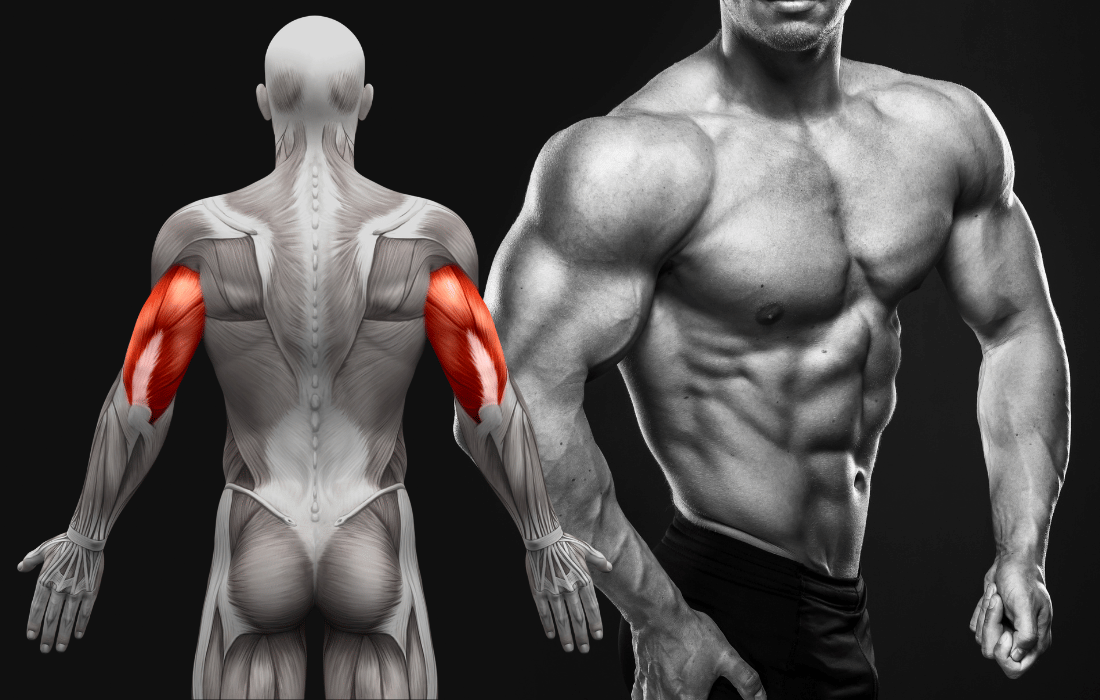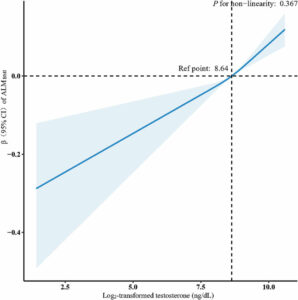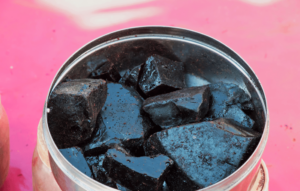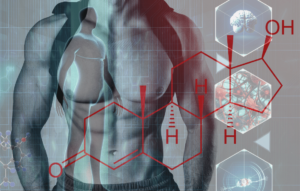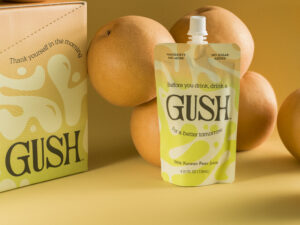We all know testosterone has a pretty stacked resume: muscle growth, libido, mood regulation, bone density—the hormone wears many hats. But here’s the kicker: according to a newly published cross-sectional study analyzing 4,495 adult men from the NHANES dataset (2011–2014), testosterone might not play the role in strength we thought it did. Muscle mass? Yes, there’s a clear link. Strength? Not so much.
Now, if you’re a guy aged 20 to 59 wondering how much your T-levels affect your gains in the gym, this research brings some nuance—and even a few surprises.
Let’s break down what this means for men’s health, athletic performance, and how we think about muscle.
Testosterone 101: A Brief Refresher
Before we dive into the nitty-gritty of this hormone’s relationship with muscle, let’s take a step back. What exactly is testosterone doing behind the scenes—and why has it long been hailed as the ultimate muscle-building molecule?
What testosterone does in your body
Testosterone is the principal male sex hormone, produced primarily in the testicles. It influences:
Muscle protein synthesis
Libido and sexual performance
Energy levels
Fat distribution
Red blood cell production
And of course—muscle development. It works at the cellular level, promoting the activity of satellite cells (the muscle stem cells responsible for repair and growth), while inhibiting fat cell differentiation.
The assumption: more testosterone = more strength
This has been the prevailing belief. But newer research, including this recent NHANES analysis, shows we need to separate the concept of muscle size from muscle function. They’re not always the same.
The New Study: Key Findings
This recent study, published in Frontiers in Physiology, examined men between the ages of 20–59 and found that:
Testosterone levels were positively associated with muscle mass (ALMBMI)
Testosterone levels were not significantly associated with muscle strength (grip strength)
For women, the story was different altogether—no significant associations with either muscle mass or strength.
Let’s unpack the details.
Muscle Mass vs. Muscle Strength: What’s the Difference?
Muscle mass (ALMBMI)
Measured using dual-energy X-ray absorptiometry (DXA), appendicular lean mass (ALM) refers to the total muscle in the arms and legs. ALMBMI adjusts this measure relative to body size.
Muscle strength (GSMAX)
Assessed using a handgrip dynamometer. While a decent proxy for general strength, it doesn’t tell the whole story about dynamic movements or athletic performance.
This is important: strength depends not just on the size of your muscles, but also on neuromuscular efficiency—how well your brain and nervous system activate your muscles.
What the Data Actually Says

This chart illustrates a clear positive correlation between testosterone and muscle mass. Source: Frontiers in Physiology Higher total testosterone was significantly linked with higher ALMBMI in men.
Men in the top testosterone quartile had an 80% lower risk of low muscle mass compared to those in the bottom quartile.
But when it came to grip strength, the correlation wasn’t statistically significant.
Graphs and modeling confirmed:
A linear dose-response curve between testosterone and muscle mass
No similar pattern with grip strength
Why Testosterone Boosts Mass But Not Strength
This finding isn’t as strange as it seems when you look under the hood. On the surface, it feels counterintuitive—shouldn’t more testosterone lead to more power? But when you zoom in on how the human body works, especially the nervous system, it becomes clear why these two variables don’t always go hand in hand.
Strength is more than just size
Neurological control: Strength relies heavily on the central nervous system’s ability to recruit motor units effectively. Even with massive muscles, poor neural drive will limit how much force you can exert. That’s why elite powerlifters train not just for muscle growth, but also for neurological efficiency.
Muscle fiber type: Type II (fast-twitch) fibers are essential for explosive strength. These fibers respond well to strength training but deteriorate with age more rapidly than Type I fibers. While testosterone can help with hypertrophy, it doesn’t guarantee retention of fast-twitch function.
Mitochondrial dysfunction: Strength isn’t just about contractile power; it’s about how quickly and efficiently muscles can use energy. Aging diminishes mitochondrial efficiency, which compromises power output—even when mass is preserved.
Coordination and motor learning: Your ability to lift heavier weights doesn’t solely depend on your muscles, but also on how practiced you are at engaging them. Movement patterns, joint alignment, and firing sequences all matter.
Muscle quality vs. quantity: It’s not just how much muscle you have—it’s what’s in that muscle. Intramuscular fat infiltration, inflammation, and poor capillarization can reduce muscle quality. Testosterone helps quantity, not necessarily quality.
Training matters
Testosterone might build more muscle tissue, but if you’re not training specifically for strength (like heavy resistance work, low reps, explosive movements), you’re not optimizing function. The type of training you engage in rewires your neuromuscular pathways. A guy with lower testosterone who trains correctly might out-lift someone with higher testosterone who just does hypertrophy work. Strength requires specificity. Period.
Also, consider recovery. Testosterone influences recovery speed, but sleep, stress, and nutrition are just as vital. Without these, any gains from elevated testosterone—natural or supplemented—can be dulled or even lost entirely.
The Role of Lifestyle
The conversation around testosterone often gets hijacked by pills, injections, or trendy supplements. But the reality? Lifestyle habits—those daily, often overlooked choices—are some of the most powerful regulators of your hormone health.
If you’re not sleeping enough, eating like crap, or sitting more than you’re standing, no amount of TRT is going to save your muscle integrity in the long term. Let’s look at the most influential lifestyle factors that affect testosterone and muscle health—and what you can actually do about them.
1. Diet
A Western-style diet (high in sugar, processed food, seed oils, etc.) is linked to lower testosterone levels.
Higher protein intake and nutrient density support both testosterone production and muscle synthesis.
2. Exercise
Resistance training boosts both testosterone and muscle mass.
Sedentary lifestyle? Expect a decline in both muscle and hormones.
3. Substance use
Smoking may temporarily raise testosterone, but it damages overall health.
Chronic alcohol use disrupts testosterone metabolism and harms muscle tissue.
4. Metabolic health
- Conditions like diabetes, chronic kidney disease, or liver dysfunction can suppress testosterone and impair muscle function.
Managing blood sugar, supporting liver detoxification, and staying metabolically flexible through diet and movement are essential for hormonal balance. around testosterone often gets hijacked by pills, injections, or trendy supplements.
5. Sunlight
Regular sun exposure helps increase vitamin D levels, which are directly linked to testosterone production.
Low vitamin D is associated with low T, poor mood, and reduced muscle function.
6. Sleep
Poor sleep lowers testosterone levels almost immediately, even just one bad night.
Aim for 7–9 hours of uninterrupted sleep to support hormone balance, recovery, and performance.
7. Mitochondrial health
Mitochondria are the engines of your cells, and testosterone supports mitochondrial biogenesis.
A healthy diet, regular exercise, and minimizing oxidative stress through antioxidants (like CoQ10 or PQQ) can support mitochondrial function and energy output.
8. Cold exposure
Cold showers or ice baths may boost testosterone by reducing inflammation and improving mitochondrial efficiency.
Cold exposure also enhances dopamine and norepinephrine levels, supporting focus, resilience, and metabolic health.
What About Women?
Here’s where the hormone’s influence fades:
Testosterone levels in women are much lower than in men (20x less).
This study found no significant correlation between testosterone and either muscle mass or strength in females.
Factors like estrogen, physical activity, protein intake, and genetic variation likely play a more dominant role in muscle maintenance in women.
Testosterone Therapy: Is It Worth It?
The research here gets muddy.
TRT can increase muscle mass in hypogonadal men.
But improvements in strength and physical performance are inconsistent.
And there are risks: polycythemia, cardiovascular events, and suppression of natural testosterone production if not cycled or supervised.
Hot take: save this for when you are closer to 60 years old. While it’s true that there is a testosterone epidemic in the world nowadays, this doesn’t mean hormone replacement is the cure. There are too many natural lifestyle changes on the table to address before relying on something like TRT at a young to middle-aged man.
Important Limitations of the Study
Cross-sectional data: This is a snapshot in time, not a cause-and-effect study.
Free testosterone not measured: Total testosterone doesn’t tell the whole story. Free T is what’s biologically active.
Grip strength limitations: It doesn’t measure power or functional strength.
Missing data: Dietary patterns, micronutrients, and other hormones like IGF-1 or estrogen weren’t fully accounted for.
Real-World Takeaways for Men
Testosterone helps with muscle mass, but strength gains still require focused resistance training.
Lifestyle influences testosterone levels more than you think—especially sleep, stress, nutrition, and exercise.
Don’t chase muscle size if your goal is function. Strength and athletic performance are about quality, not just quantity.
If you suspect low testosterone, get your levels checked—but also look at your lifestyle before hopping on TRT.
Final Thoughts
This study reminds us of a crucial distinction in men’s health: being jacked doesn’t always mean being strong.
Testosterone is clearly important for muscle mass in men, but strength is a more complicated equation that involves your nervous system, training habits, recovery, and overall health. If you’re trying to boost strength, the smartest play is a holistic one—train hard, sleep well, eat like you care, and consider testosterone one piece of the larger puzzle.
We’ll keep watching this space as more longitudinal studies roll out. But for now, let this serve as a reminder: muscle without strength is just for show. And strength without health? That’s a short game.

